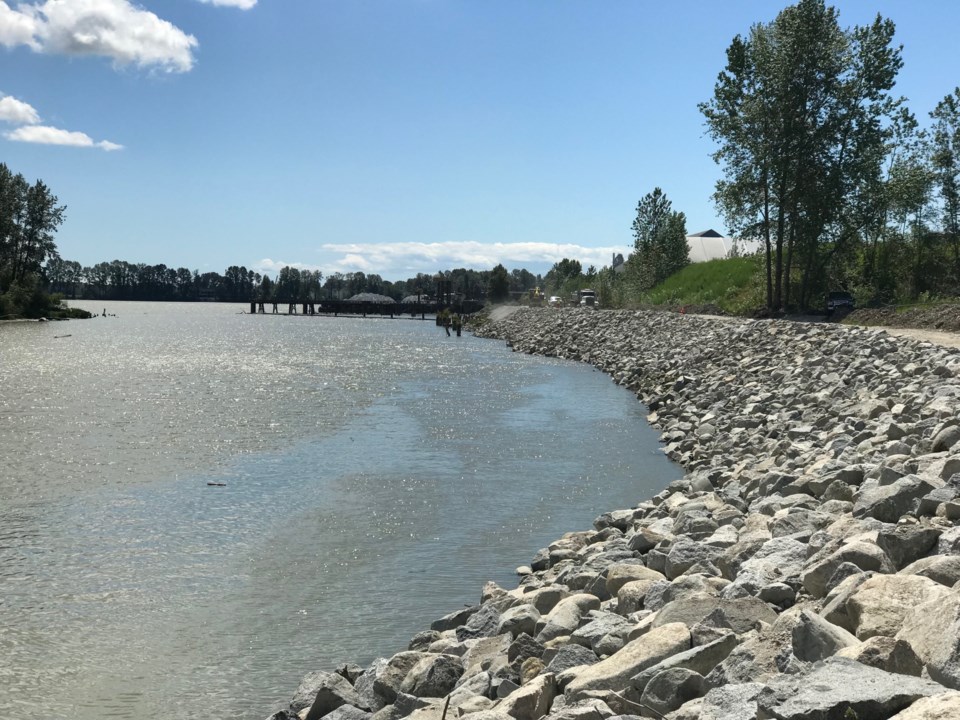Fish habitat that will be impacted by dike upgrades could be offset by working with the federal government to create a “fish habitat bank,” according to Richmond city staff.
If it’s endorsed by Richmond city councillors, the proposed habitat bank would ensure habitat is restored, enhanced or created through conservation projects. These, in turn, could be used as a credit to offset development projects that would negatively impact fish and fish habitat, according to the Department of Fisheries and Oceans.
The city is currently carrying out maintenance and upgrades to Richmond’s 49 kilometres of dikes, with the aim of raising Richmond’s perimeter dikes by at least 4.7 metres over a 50-year period, as sea levels are expected to rise by around a metre by 2100, by conservative estimates.
However, current and future dike work – such as the proposed North Dike upgrades – will have “unavoidable impacts on existing riparian and aquatic habitat along the landside of the dike,” according to a report to council’s public works and transportation committee. It notes that the federal Fisheries Act requires that unavoidable impacts to fish and fish habitat be offset.
“The need to raise the dikes and fill these areas will trigger provincial and federal permitting requirements that include offsetting for the loss of habitat,” the report reads.
For example, it’s estimated the city will be required to offset about 15 hectares of riparian habitat to complete just the proposed North Dike improvements between No. 6 and Boundary roads.
The city has had to offset past dike improvement projects, and has completed about eight hectares of fish habitat as a result. This has been done, typically, on a 3:1 ratio on a project-by-project basis and includes the marsh benches near the Olympic Oval and the riparian habitat at the Woodward Slough.
However, city staff are now recommending a fish habitat bank, which “can be deployed strategically to strengthen and build the city’s ecological network.” It also offers a “consistent and reliable permitting arrangement,” according to the report.
If councillors endorse the fish habitat bank, city staff would begin to negotiate an agreement on the city’s offsetting projects with DFO, outline possible project sites and develop a public communication plan and stakeholder consultation program.
The report notes that priority for the habitat bank will be given to areas on city-owned land.
However, negotiations with DFO are expected to be “lengthy” and it could take years to finalize the terms and begin work on the projects, according to the staff report. In the meantime, the city will use other offsetting measures.
The habitat bank will be discussed at Tuesday’s public works and transportation committee meeting.



